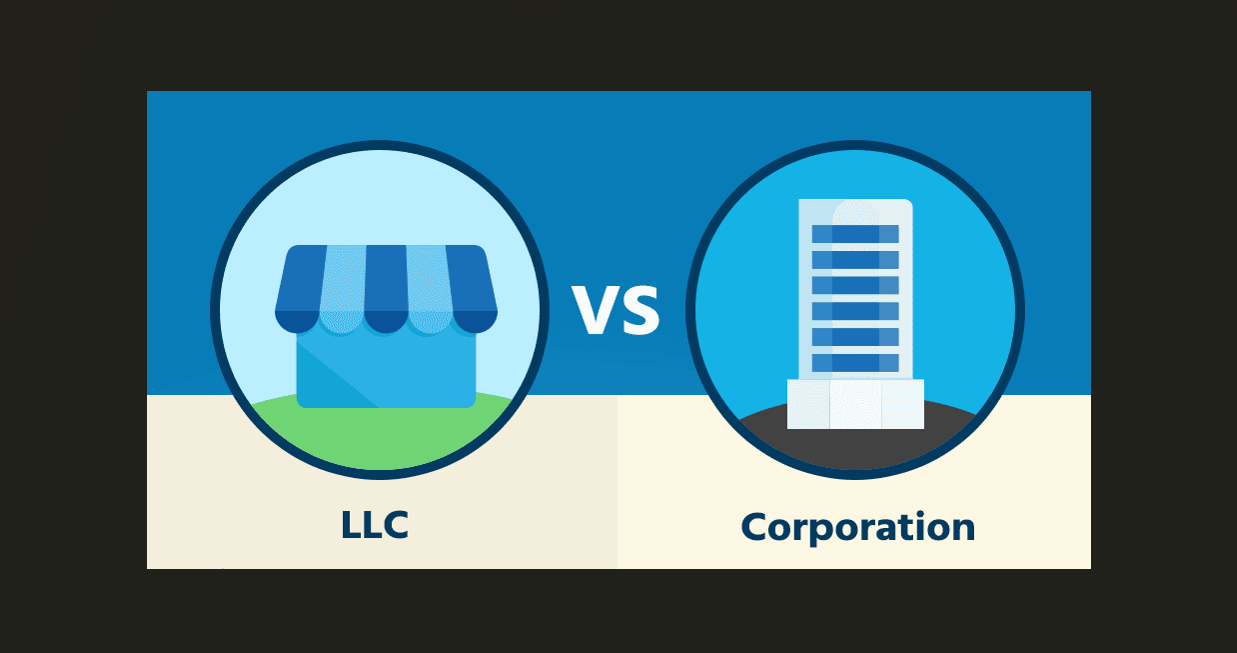Section 1202 of the IRS tax code allows for investors to exclude 100% of their qualified small business stock (QSBS) gains from their income on tax returns, but that QSBS must be issued by a C-Corporation. What if an LLC wants to convert to a C-Corporation and take advantage of Section 1202? When does that make sense and when are the tax savings not worth it?
What are the pros and cons of registering your startup as an LLC?
Registering your startup as an LLC is a fairly simple filing process, and the taxes are simpler, too. Any losses you experience in your LLC pass through to the owners’ tax returns and tax classifications are flexible. Additionally, distributions of an LLC are not taxed if there is sufficient basis. The main downside of registering your startup as an LLC is that the QSBS exclusion will not apply (unless you elect to be taxed as a C-Corporation right away).
What are the pros and cons of registering your startup as a C-Corporation?
In addition to the QSBS exclusion, registering your business as a C-Corporation allows you to defer the dividend tax and the 21% corporate tax rate may be preferable if you plan to reinvest profits into the company. Conversely, registering as a C-Corporation means a higher tax rate if you plan to distribute profits, and losses cannot offset personal income and can only offset future company income.
When should a company convert from an LLC to a C-Corporation?
If a company has substantial profits reinvested in the business and does not qualify for the QBI deduction, we often recommend converting to a C-Corporation to take advantage of the QSBS exclusion. Additionally, if a company plans to issue common stock or preferred stock, for capital calls, or if they have big plans to go public, converting to a C-Corporation is advantageous.
It’s important to run the numbers on what a company, as a C-Corporation, would pay with the corporate tax rate plus the dividend tax and confirm that the result doesn’t far outweigh the savings through the QSBS exemption. Otherwise, it may not be worth it to convert to a C-Corporation just for the QSBS exclusion. It’s also important to consider future plans like the likelihood of a merger or acquisition, the size of that transaction, and the cash flow needs of the owners.
Here are the critical questions we ask before helping a client convert:
- What type of net income are you expecting?
- How much will be distributed?
- How likely are you to sell and when?
- What does a conversion back to an S-Corporation look like if circumstances change?
How do you convert from an LLC to a C-Corporation and who is involved?
A collaborative CPA team and legal team makes the conversion process digestible and will take care of all the paperwork that needs to be filed, like the final LLC return and the initial C-Corporation return. Conversion requirements vary by state so be sure to pick a firm that is familiar with your state’s process.
There are three types of conversions:
- Statutory conversion
- Statutory merger
- Non-statutory conversion
The statutory conversion is the easiest and most popular option since the transfer of all your LLC’s assets and liabilities happens automatically. The process includes:
- Creating a plan of conversion
- Getting the plan approved by your LLC stakeholders
- Filing a certificate of conversion with your state’s Secretary of State
- Completing articles of incorporation
During conversion is also an ideal time to analyze the valuation of the company. Through this process you can build support and documentation for valuation to establish your basis for any C-Corporation stock.
How does Section 1202 and the Qualified Small Business Stock exclusion help C-Corporations?
To incentivize investment in small businesses, investors can exclude 100% of capital gains on Qualified Small Business Stock from taxable income. (Many more details on Section 1202 here.) While Section 1202 doesn’t have a direct impact on the company’s tax return, it’s a strong incentive for investors. The QSBS exclusion can also influence selling price if you consider that it’s more tax efficient for a company to increase selling price than issue dividends, because their investors can exclude a gain on QSBS but they can’t exclude dividends received.
What is the QSBS Exclusion limit?
According to the IRS, the maximum gain from the sale of QSBS that can be excluded in a tax year is limited to the greater of $10 million or 10x Basis. Consider if you invested $3M in QSBS and the value of that stock jumped to $50M. You’ve gained $47M and you can either exclude:
- $10M in QSBS
OR - 10 X Basis ($3M) = $30M in QSBS
So you’d want to apply the 10X Basis Rule to exclude $30M and only pay taxes on the remaining $17M gains. In most cases, basis is determined by the cash you invested. However, when a company was previously taxed as a partnership, the 10X rule will apply to the fair market value (FMV) of the QSBS at the time of conversion. This can lead to large exclusion amounts that well exceed the $10M limit.
Why is the $50M gross asset test important?
The gross asset test is important for larger companies converting from LLCs to C-Corporations that have sizable assets. For example, let’s compare:
| Company 1 | Company 2 |
| Value: $1M | Value: $1M |
| Cash: $1M | Cash: $51M |
| Debt: $0 | Debt: $50M |
While both companies are valued at $1M, Company 2 cannot issue additional QSBS because their gross assets are valued at over $50M.
How does the QSBS holding period affect converting from an LLC to a C-Corporation?
In order to apply the QSBS exclusion to gains, investors have to have held the QSBS for at least five years. It’s likely that Congress determined five years to be enough time to truly scale a startup and boost the economy it operates within. Because of this, we advise companies to convert to a C-Corporation at least 5 years before they plan to exit, in order to really sell investors on the value of QSBS. Time spent as an LLC adds nothing to this holding period so investors will want to know you have at least 5 good operating years left in order to invest in QSBS and take advantage of the exclusion.
Here’s an example of the tax savings of converting to a C-Corporation.
Our client registered as an LLC, went from $200K in sales to $3M in sales by Year 3 then converted to a C-Corporation. At the time of conversion, the company was valued at $5M. Those early gains up to $5M are tied to the LLC and are not eligible for the QSBS exclusion. However, the increase in valuation from $5M is eligible and when the client sells for $12M in Year 8, they will have $7M of QSBS gains and $5M of normal capital gains.
The Section 1202 QSBS Exclusion is a great way to incentivize and draw investment in your company, but only once it’s a C-Corporation. The conversion from LLC to C-Corporation can seem daunting so it’s important to consider all angles and your full tax obligation to make sure it’s worth it. If you’re registered as an LLC and ready to convert to a C-Corporation, or just trying to understand what your QSBS exclusion could be worth, we’d love to talk. Schedule a call with our experienced CPAs here.





